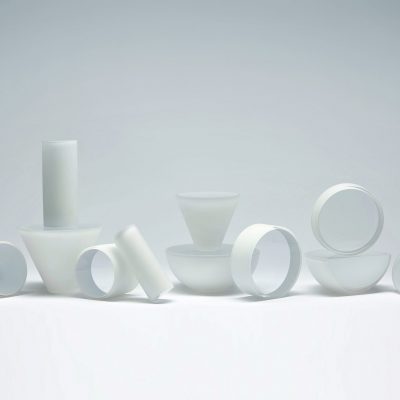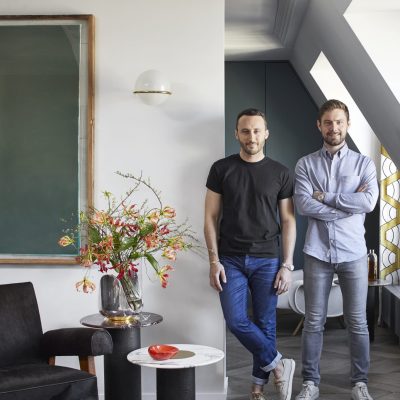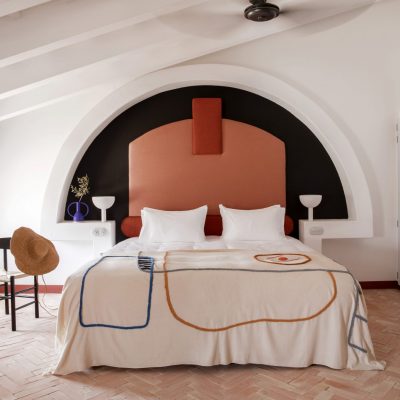In the Pink
Villa Serralves is a homage to Art Deco style – and the vision of its single-minded creator

When the Exposition Internationale des Arts Décoratifs et Industriels Modernes was held in Paris in 1925, a new style was born. And it was also at this now-legendary exhibition that the movement was given a name – Art Deco.
Among the visitors in thrall to this modern look was Carlos Alberto Cabral, the 2nd Count of Vizela in Portugal. Cabral’s money came from his family’s textile mills in the north of Portugal, but he was more an aesthete than an industrialist. He visited the 1925 exposition with the aim of acquiring inspiration and expertise for his own project back home, and was particularly taken by a set of rooms by the furniture designer Émile-Jacques Ruhlmann. When Cabral returned to Portugal, he began the process of building a home that would pay homage to his beloved Parisian style.
Today, Serralves Villa in Porto stands as an outstanding example of French Art Deco architecture. Known locally as ‘Casa Cor de Rosa’, or the Pink House, it was built on the site of his family’s more modest 19th century farmhouse. Cabral’s aim was to establish a modern architectural icon for the city – and to show Porto high society that he was a gentleman to be reckoned with.
“With this house, he wanted to say, ‘Admire me, not just because I am rich, but because I have taste – and French taste at that’,” explains architect and curator João Almeida e Silva, who works with the Serralves Foundation.


As bold statements go, Cabral’s villa took a while to make its point. Building work began in 1927, but a series of revisions and additions meant it wasn’t finished until 1941. The Portuguese architect José Marques da Silva oversaw the work, but the style and decoration definitely took its lead from Paris.
The striking pink palette was dreamed up by the French architect Charles Siclis, who Cabral consulted. He sent the count two watercolours depicting the facades of the villa. “In these paintings, the plasterwork, the flowers, even the gravel, were tinted a creamy pink,” says Almeida e Silva. “They gave Cabral his starting point and his palette.”
Having seen Ruhlmann’s work in Paris, Cabral commissioned him to decorate and furnish the villa’s interior, but unfortunately Ruhlmann died in 1933, before he could complete it. Instead, his nephew Alfred Porteneuve, also a designer, took over.
It was Portenueuve who created the villa’s pink marble bathroom – perhaps the best preserved of the rooms, and the one that gives a true flavour of the lifestyle enjoyed by the Count and his wife, Blanche Daubin.
Cabral cared deeply about design and wanted to create a piece of architecture for Porto that would endure

Sections of pink Portuguese marble and mirror glass form a circular shape within the room: “It’s designed like a clock face, emphasised by the marble floor tiles, which radiate from a central point,” Almeida e Silva explains.
When Madame Daubin entered from the master bedroom, her bath lay straight ahead, at 12 o’clock. Turning her gaze out of the window, at 2 o’clock, she could survey neat parterres and water features created by Parisian garden designer Jacques Gréber.
Meanwhile, to the left, mirrored doors concealed cabinets (including a safe for her jewellery) and her dressing room. A final door hid a toilet and bidet: “Following the French way, they were kept separate from the bathing area,” adds Almeida e Silva.
The inset white enamel tub is a later addition, dating from the 1950s when the house was sold. “The next lady of the house found the bare marble too cold for comfort,” explains Almeida e Silva. However, the museum has not attempted to remove it for fear of damaging the marble underneath.



Every room of this house was once full of Art Deco furniture, lighting and rugs that were on a par with the quality of work in this bathroom. Parquet flooring was laid by a carpenter trained in Paris. A glass rooflight was designed by Lalique, and the dining table would have been exquisitely laid with Rouard porcelain and silverware from Mappin & Webb.
Receipts for these items – and more – are among Cabral’s paperwork, now filed away in the foundation’s archives. But almost all the original furniture is long gone, auctioned off in the 1950s when real life finally intruded on the Count’s vie en rose.
“It was as if Cabral created a microworld at Serralves,” says Almeida e Silva. “For 14 years, he deliberated over the designs, adding and rebuilding. In the meantime, war broke out in Europe, and Portugal entered a dictatorship. Yet, by and large, work seemed to continue slowly and steadily, in a sort of vacuum.”
But, eventually, there was no avoiding the reality of Portugal’s post-war economy, which hit the family business hard; and in 1955, the villa was sold to another textile magnate, Delfim Ferriera. The Portuguese state bought the house and grounds from him in 1987.
However, Almeida e Silva says, it would be glib to dismiss Cabral as a Gatsby-esque figure. “Yes, he built a pink palace amid a grey, granite world. But Cabral was essentially a good man. He cared deeply about design and wanted to create a piece of architecture for Porto that would endure. And, in that, he has succeeded.”



